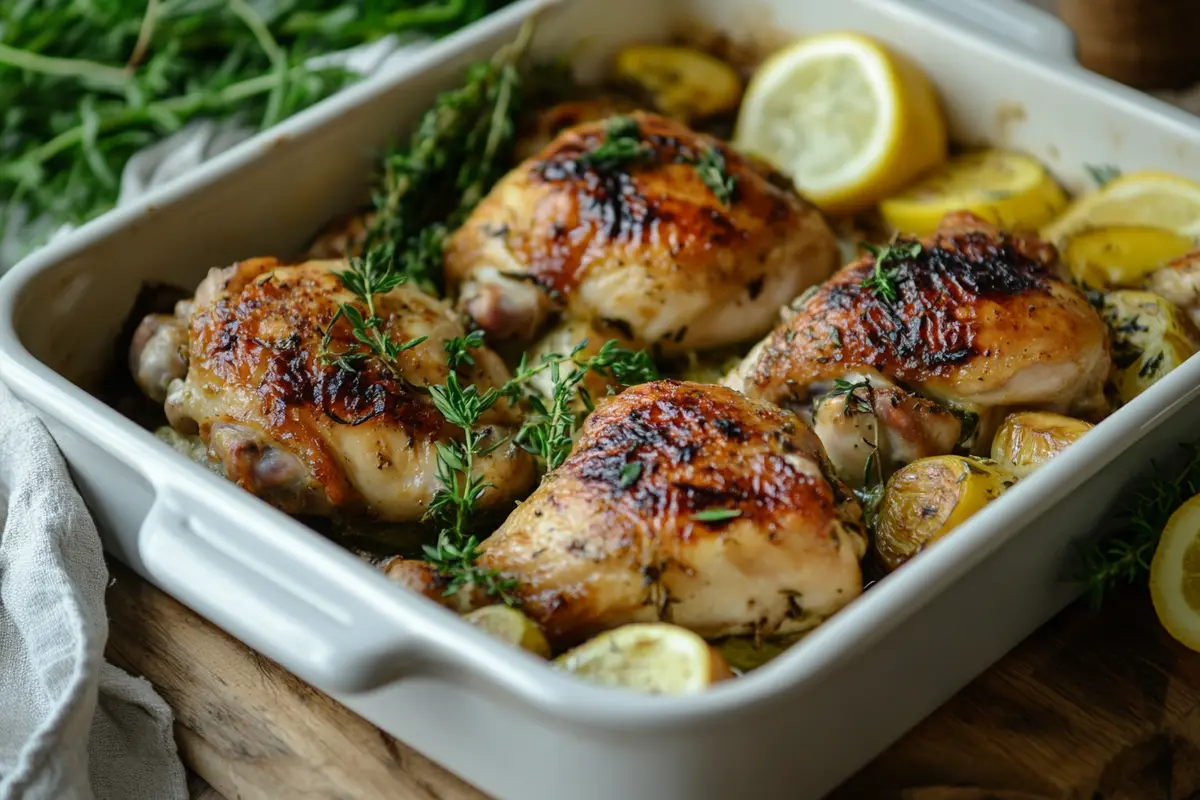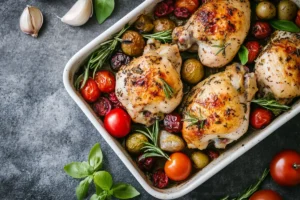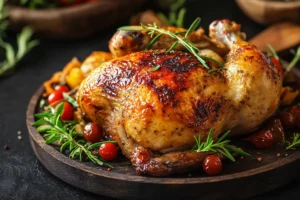Harness the amazing flavor and benefits of lectin-free chicken from pasture steps in your everyday meals.
Welcome to a deep dive into the world of lectin-free chicken from pasture steps. In this article, we will explore the health advantages, sustainability factors, and cooking methods that make pasture-raised, lectin-free chicken a top choice for many households. We will also address common myths and questions about lectins, organic labeling, and what it truly means to raise chicken on pasture. Let’s begin our journey toward better nutrition and a healthier lifestyle.
Introduction to Lectin-Free Chicken from Pasture Steps
Pasture-raised poultry is gaining popularity because of its nutritional benefits and ethical considerations. Lectin-free chicken from pasture steps focuses on reducing harmful lectins while enhancing the poultry’s overall quality. Indeed, many individuals want to avoid lectins due to potential digestive issues and overall inflammation. Consequently, learning how pasture-based methods help limit these compounds can be a game-changer in your cooking routine.
Another important factor involves how chickens are raised. This starts with choosing the right breed and providing a diet free from high-lectin grains. Furthermore, rotational grazing practices improve animal welfare and promote nutrient-dense meat. Altogether, embracing lectin-free chicken from pasture steps leads to a wholesome approach that benefits both you and the environment.
Understanding Lectins
Lectins are naturally occurring proteins found in many grains, legumes, and some vegetables. They serve as part of a plant’s defense mechanism, and, in high amounts, they may interfere with nutrient absorption in humans. While not everyone is lectin-sensitive, some people experience digestive discomfort when they consume too many lectins. Consequently, removing or reducing foods high in lectins could be beneficial for gut health.
- What are lectins?
Lectins are proteins that bind to carbohydrates. They can be problematic when consumed raw or in excess. They may lead to issues such as bloating and inflammation. - Common sources of lectins
Many grains (especially wheat), legumes (beans, lentils, peanuts), and nightshade vegetables (tomatoes, peppers, eggplants) contain substantial amounts of lectins. Moderation or proper preparation techniques like soaking and pressure-cooking can reduce lectin content. - Effects on digestion
Lectins sometimes pass through the gut lining undigested, causing irritation. However, most healthy adults can manage lectins without adverse effects. Still, many people benefit from limiting them, especially if dealing with autoimmune or gut-related concerns. - Why avoid or reduce lectins?
Despite the potential nutritional advantages of certain lectin-rich foods, some individuals want to alleviate chronic inflammation or digestive discomfort. They do so by following a lectin-free or low-lectin lifestyle. This approach emphasizes safer cooking methods and carefully selecting low-lectin or lectin-free foods.
Why Pasture-Raised Chicken?
Pasture-raised chicken has garnered attention for its superior taste and ethical merits. When chickens roam freely on pasture, they can peck at insects, forage for grasses, and enjoy sunlight. Consequently, this environment supports their natural behaviors and reduces stress.
- What does “pasture-raised” mean?
Pasture-raised generally refers to chickens that spend most of their time outdoors on open grass. They have plenty of space to move around and access to shelter for protection against harsh weather or predators. - Differences between pasture-raised, free-range, and conventional chicken
“Free-range” can sometimes mean chickens only have minimal outdoor access. Conventional chicken often comes from indoor confinement systems where birds never see the outdoors. Meanwhile, pasture-raised explicitly ensures continuous access to open fields for a more natural lifestyle. - Health benefits of chicken raised on pasture
Pasture-raised chicken tends to be higher in certain nutrients like vitamin E, vitamin A, and omega-3 fatty acids. It also contains more antioxidants. Because of their active lifestyle, pasture-raised birds generally have leaner meat. - Environmental advantages of pasture-based farming
Rotational grazing contributes to soil fertility and biodiversity. The birds’ manure fertilizes the land naturally. Consequently, pasture-raised systems often have a smaller ecological footprint than industrial methods.
Essential Steps to Ensure Lectin-Free Chicken from Pasture Steps
Achieving lectin-free chicken from pasture steps starts with a combination of proper breed selection, feeding practices, rotational grazing, and a healthy environment. Below are the key steps to foster truly lectin-free poultry.
- Selecting the right breed Some chicken breeds adapt better to foraging and do not require excessive grain-based feeds. Breeds like Freedom Rangers or certain heritage lines thrive on pasture. Consequently, they rely less on commercial grain.
- Optimal feeding methods to minimize lectins
- Provide a grain-free or low-lectin feed: This could involve feeds based on seeds, insects, or carefully selected non-lectin grains (if any).
- Add nutrient-dense supplements like alfalfa or hemp seeds, which have low lectin content.
- Avoid soybean- or corn-based feeds, as these contain higher levels of lectins.
- Proper rotational grazing techniques
- Move chicken enclosures regularly so they can forage in fresh areas.
- This reduces the need for external grains because the birds get insects, worms, and seeds from the land.
- It also helps control parasites and keeps the soil healthy.
- Ensuring clean water and a healthy environment
- Provide fresh, clean water daily.
- Maintain shelters for extreme weather but allow maximum outdoor time.
- Keep the living area free of built-up waste to discourage bacterial growth.
- Supplements and natural additives for lectin-free feed
- Consider adding herbs like oregano or thyme. They act as natural antimicrobial agents.
- Use organic minerals and vitamins to ensure well-rounded nutrition.
By focusing on these essential elements, farmers can significantly lower lectin content in the feed. Thus, the final product is a wholesome, lectin-free chicken from pasture steps that families can enjoy with peace of mind.
Nutritional Profile of Pasture-Raised, Lectin-Free Chicken
Properly managed, pasture-raised poultry offers an impressive nutritional profile. Indeed, it can help you meet your protein needs while supporting overall wellness.
- Protein content
Chicken is an excellent source of complete protein, meaning it contains all essential amino acids. Pasture-raised birds often have a slightly higher protein density because they are leaner. - Essential vitamins and minerals
- Vitamin E and vitamin A levels can be higher in pasture-raised chicken.
- Minerals like zinc, iron, and selenium also appear in beneficial amounts, supporting immune function and energy levels.
- Fatty acid profile and omega balance
- Pasture-raised chicken typically has more omega-3 fatty acids compared to conventionally raised birds.
- Omega-3 and omega-6 balance can contribute to reduced inflammation and better heart health.
- Comparison to conventional chicken
- Conventional chicken often has higher total fat content, but not necessarily healthier fats.
- The presence of healthy antioxidants may also be lower in confined birds.
Cooking and Preparation Tips
Although the raw product starts off lectin-free chicken from pasture steps, proper handling and cooking methods remain essential. This preserves flavor, reduces any food safety risks, and retains nutrients.
- Safe handling and storage
Keep raw chicken refrigerated (at or below 40°F). Use separate cutting boards and utensils for raw poultry to avoid cross-contamination. Label your packaging clearly if you buy in bulk. - Marinade ideas without lectin-rich ingredients
- Use olive oil or avocado oil as a base.
- Add herbs and spices like rosemary, garlic (preferably roasted or powdered, as raw garlic can contain moderate lectins), oregano, and basil.
- Avoid tomato sauce or soy sauce in the marinade, as these might contain higher lectin foods unless you’ve properly prepared them.
- Cooking methods to preserve flavor and nutrients
- Baking, grilling, or steaming are good choices.
- Keep cooking temperatures moderate to prevent excessive nutrient loss.
- Use meat thermometers to ensure the chicken reaches at least 165°F internally.
- Tips for batch cooking and meal prep
- Cook large batches of chicken at once, then store individual portions for quick meals.
- Cut down on cooking time by marinating overnight.
- Freeze extras in sealed containers, defrosting them in the fridge before use.
Key Health Benefits of Lectin-Free Chicken from Pasture Steps
Opting for pasture-raised poultry aligns with better health outcomes, especially when the feed avoids lectins. This approach supports gut health and delivers cleaner, higher-quality protein.
- Supporting gut health Eating lower-lectin foods can help minimize bloating and inflammation, especially for individuals sensitive to lectins. Because of the minimal grain feed, lectin-free chicken from pasture steps tends to be gentler on digestion.
- Improving cardiovascular health
Pasture-raised chicken offers more beneficial fatty acids, notably omega-3s, which may promote heart health. Accordingly, lower saturated fat levels also help keep cholesterol in check. - Enhancing micronutrient intake
A varied nutrient profile of vitamins and minerals, including B-complex vitamins, fosters energy production and overall vitality. Undoubtedly, these micronutrients contribute to a stronger immune system. - Weight management potential
Lean proteins are known for their role in maintaining a healthy weight. When combined with vegetables and wholesome fats, lectin-free chicken from pasture steps becomes part of a balanced, nutrient-dense diet.
Addressing Common Myths and Misconceptions
It’s easy to get confused by marketing labels and rumors. Let’s clarify several misconceptions.
- Myth: “All chicken is the same, regardless of feed.” Different feeds lead to different nutritional outcomes. Grain-heavy, industrial feeds raise lectin content. Conversely, pasture-raised with a controlled feed approach yields lower lectin poultry and higher nutrient quality.
- Myth: “Pasture-raised chicken is always expensive.”
While it can be pricier than conventional chicken, innovative small farms strive to keep costs manageable. Buying direct from farms or through community-supported agriculture (CSA) can reduce costs. Additionally, you get a superior product for your investment. - Myth: “Lectin-free diets are restrictive and unhealthy.”
A well-planned lectin-free approach still allows numerous nutrient-rich foods. Many fruits, vegetables, poultry, fish, and certain grains (in their lectin-reduced forms) remain available. - Myth: “You cannot get enough nutrients on a lectin-free approach.”
Properly balancing your meals ensures you obtain all essential macronutrients and micronutrients. Moreover, focusing on quality protein, low-lectin vegetables, and healthy fats offers a nutrient-dense menu.
Practical Buying Guide
Selecting lectin-free chicken from pasture steps can be challenging if you’re new to the process. However, a few simple tips can make all the difference.
- Identifying true pasture-raised poultry labels
Look for labels that say “Pasture-Raised” or “Certified Humane Pasture-Raised.” If in doubt, check the farm’s website or call them to confirm. - Questions to ask local farmers
- “Do your chickens have continuous access to pasture?”
- “What do you feed them?” (Ensure feed is free from soybeans, corn, or other lectin-heavy grains if you want to avoid lectins entirely.)
- “Do you use antibiotics or hormones?”
- Budget-friendly sourcing methods
Buying in bulk directly from the farm is often cheaper. You can also split costs with friends or neighbors. Meanwhile, some farmers offer subscription services for regular deliveries. - Online purchasing tips
Confirm shipping options and packaging. Look at customer reviews. In many cases, farmers offering nationwide shipping invest in well-insulated boxes to ensure product freshness.
Sustainability and Ethical Considerations
Choosing lectin-free chicken from pasture steps goes beyond just personal health. It also supports responsible and ethical farming.
- Animal welfare benefits
Pasture-raised systems allow chickens to forage and behave naturally. They get fresh air, sunshine, and space. This reduces stress and improves overall health. - Environmental impact
Regenerative methods like rotational grazing can promote biodiversity. Chickens fertilize the land as they roam. Consequently, this practice often leads to lower reliance on chemical fertilizers. - Supporting small farms and local communities
By purchasing from small farms, you bolster local economies. You also help maintain rural traditions and farmland preservation. - Planning for a more sustainable future
Lectin-free diets can coincide with lower grain consumption, easing pressure on large-scale monoculture. Consequently, it’s a way to harmonize personal health with environmental stewardship.
Culinary Inspiration: Lectin-Free Chicken from Pasture Steps Recipe
Now, let’s preview a simple way to cook your lectin-free chicken from pasture steps. This approach highlights flavor without introducing high-lectin ingredients.
- Overview of a simple, flavorful recipe
Our recipe focuses on fresh herbs, high-quality oils, and a slow-roast method. The goal is to preserve the tender texture of pasture-raised poultry. - Ingredient considerations
- Choose poultry from a reliable source with a lectin-controlled feed.
- Herbs like oregano, thyme, and rosemary add aromatic depth.
- Avoid tomatoes, beans, or peppers if you’re fully lectin-free unless they are pressure-cooked or peeled and deseeded.
- Step-by-step cooking instructions
We will share expanded instructions after the article’s main body. Stay tuned for a detailed list of ingredients, cooking directions, and nutritional breakdown. - Serving suggestions and variations
Enjoy your finished chicken with a side of roasted zucchini or cauliflower rice. Alternatively, garnish with fresh parsley for extra color.
Conclusion
Choosing lectin-free chicken from pasture steps is a decision that can transform your meals. Equally important, it supports better health, environmental responsibility, and culinary satisfaction. This comprehensive approach prioritizes careful feed selection, pasture-based raising techniques, and thoughtful preparation methods. Lectin-free chicken from pasture steps aligns with a holistic lifestyle that nurtures body and mind. If you’re looking to reduce lectin intake while boosting nutrition, this is an excellent place to start. Ultimately, it combines ethical farming, delicious taste, and a positive impact on your well-being.
Frequently Asked Questions (FAQs)
Is chicken lectin-free?
Generally, plain chicken meat does not contain significant lectins. However, when chickens are fed high-lectin grains such as corn or soy, traces might appear in their tissues. Opting for lectin-free chicken from pasture steps reduces the likelihood of lectins.
Can pasture-raised chicken be organic?
Yes. Pasture-raised chickens can also be certified organic if they meet specific guidelines, including organic feed without genetically modified ingredients. Therefore, you can find products labeled as both pasture-raised and organic.
What meats are lectin-free?
Most unprocessed meats, including beef, lamb, chicken, and fish, are naturally low in lectins. The primary concern arises when animals consume high-lectin feeds. Hence, lectin-free chicken from pasture steps ensures minimal lectin content.
Do pasture-raised chickens eat grain?
Sometimes. Many farms supplement pasture-foraging with some grain. However, those committed to lectin-free production usually avoid corn, soy, and wheat. They may choose alternative feed sources like insects, sprouted seeds, or other low-lectin options.
Recipe: Lectin-Free Chicken from Pasture Steps
Below is a delicious recipe that showcases the tenderness and rich flavor of lectin-free chicken from pasture steps. The instructions are easy to follow, ensuring a satisfying meal for you and your loved ones.
Ingredients
- 1 whole lectin-free chicken from pasture steps (approximately 3–4 lbs)
- 2 tablespoons avocado oil (or olive oil)
- 1 teaspoon sea salt (adjust to taste)
- 1 teaspoon black pepper
- 1 tablespoon dried thyme
- 1 tablespoon dried oregano
- 2 cloves garlic, minced (optional if you tolerate minimal lectins in garlic)
- 1 medium onion, peeled and quartered (optional)
- 1 cup of water or low-lectin chicken stock
Optional herbs for added flavor:
- 1 teaspoon dried rosemary
- 1 teaspoon paprika (use with caution if nightshades are a concern; consider skipping if strictly lectin-free)
Step-by-Step Expanded Cooking Instructions
- Preparation
- Preheat your oven to 375°F (190°C).
- Rinse and pat dry the chicken with paper towels. Place it on a large baking tray or roasting pan.
- Rub the entire surface of the bird with avocado oil to help the seasonings stick.
- Seasoning
- In a small bowl, combine sea salt, black pepper, thyme, oregano, and any optional herbs you prefer.
- Sprinkle this seasoning blend generously over the chicken. Massage it into the skin.
- If you use garlic, distribute the minced cloves around the chicken or tuck them under the skin.
- Adding Flavor Enhancers
- Place the onion quarters around the chicken for extra aroma.
- Pour 1 cup of water or low-lectin chicken stock into the roasting pan to keep the chicken moist.
- Roasting
- Place the chicken in the preheated oven.
- Roast uncovered for about 20 minutes per pound. For a 3–4 lb chicken, expect 60–80 minutes total.
- After the first 30 minutes, check the liquid level. Add more water or stock if needed.
- Monitoring Internal Temperature
- Insert a meat thermometer into the thickest part of the thigh without touching the bone.
- The chicken is done when it reaches an internal temperature of 165°F (74°C).
- If the skin starts to brown too quickly, tent it with aluminum foil.
- Resting and Serving
- Remove the chicken from the oven and let it rest for 10 minutes. This allows the juices to redistribute.
- Carve and serve with steamed vegetables, cauliflower rice, or a green salad.
Nutritional Information (per 100g)
| Nutrient | Amount |
|---|---|
| Calories | 165 kcal |
| Protein | 31 g |
| Fat | 3.6 g |
| Saturated Fat | 1 g |
| Carbohydrates | 0 g |
| Fiber | 0 g |
| Sodium | 100 mg |
| Iron | 1 mg |




